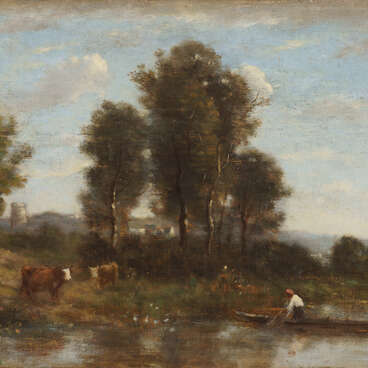Karl Wilhelm Hübner was a German Romantic painter of the Düsseldorf school of painting. He was born in Königsberg into a poor cobbler’s family and was supposed to devote himself to the working trade like his father. But a professor at the local university noticed his talent for drawing and helped the boy find sponsors to pay for his education in a prestigious place. The merchant and patron of the arts, Kähl, financed Hübner’s relocation to Düsseldorf and his admission to the Academy of Art, where the aspiring painter studied until 1841.
While still a student at the academy, Hübner participated in large art exhibitions in Berlin. And after a while his paintings were noticed and received positive reviews from critics. Following his graduation, Hübner opened his own art studio. He painted mainly genre scenes, many of them from the lives of the outcasts: thieves, smugglers, poachers — the lower strata of society — as well as landscapes. Hübner’s landscapes were often sunny, rich in light and painted in a warm color palette.
Hübner also addressed social themes. One of his most famous works — “The Silesian Weavers” — shows the exploitation of wage labor. Friedrich Engels, the famous politician and philosopher, devoted a major survey to this painting, saying that it was more powerful as propaganda than “a hundred pamphlets”.
In the middle of the 19th century, Hübner undertook a long working tour of the United States. The sketches he made during this trip provided the groundwork for many of his later paintings.
In August 1848, Karl Hübner was one of the founders of the “Palette” art society and headed it for some time. The painter was also one of the leaders of the Düsseldorf Artists’ Association and a member of several art academies.
Hübner’s work “The Letter” was created in the spirit of Biedermeier, the “style of domesticity”. This style appealed to the private life of the average citizen, his daily activities, comfort and habits. The painting depicts a clearly dramatic subject: apparently, the display of the letter is a tragic event for the girl and at the same time a reason for taunting on the part of the older lady. But the tense atmosphere of the scene does not distract the viewer from closely examining the various household items that form a picture of a cozy, peaceful existence.


